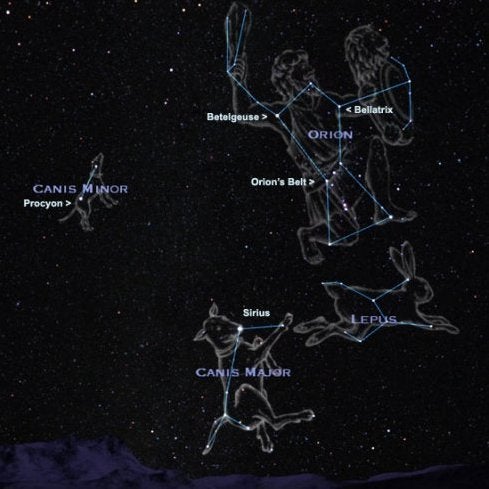

Secciones
Servicios
Destacamos

KEN CAMPBELL
Tuesday, 17 January 2017, 09:32
When you look at the stars in the night sky the first thing you notice is that they are all of different brightness. Some stars are brighter because they are closer to the Earth and other stars are brighter simply because they are brighter. Virtually every star you can see with the naked eye is bigger and brighter than our own star, the Sun. The Sun is not particularly big or bright and is just an average yellow coloured star.
More information
www.costadelstars.com
A star's brightness is measured in magnitude, the lower the number the brighter the star is. The faintest star that you can see with the naked eye under ideal conditions is about magnitude 6. Venus, the brightest planet, can be seen shining dazzlingly bright in the south-west after sunset and is now at magnitude -4.3. The full Moon shines at magnitude -12 and the Sun is magnitude -25.
Whenever I ask people which is the brightest star in the night sky they invariably say 'the North Star'. The North Star is not the brightest star; in fact The North Star only just makes it into the top 50 brightest stars at number 46 and at a magnitude of 1.97. The brightest star is called Sirius, The Dog Star at magnitude -1.44. There are two reasons why Sirius is the brightest star. Firstly it is one of the closest stars to the Earth at 8.6 light years away and secondly Sirius really is a very bright star. It is almost twice the size of the Sun but shines an incredible 25 times brighter than the Sun.
The next brightest star is called Canopus or, to give it its Arabic name, Sohail. Canopus is just too far south to be easily seen from Spain; the only place it can be viewed is from the very southernmost point of Spain near Fuengirola but even from here it just about manages to rise above the horizon. You may have noticed that the castle at Fuengirola is called castle Sohail named after the star. Sohail is 310 light years away but is a massive 65 times bigger than the Sun and an incredible 13,600 times brighter.
Sirius dominates the sky throughout the winter months rising in the east at around 7pm and is due south at around midnight in the constellation of Canis Major, the Great Dog. If you need any help in finding it, first locate Orion with his distinctive hourglass shape and then follow the three stars in his belt down toward the horizon until you meet Sirius. You really can't mistake Sirius shining brightly with its distinct blue/white colour twinkling like a diamond in the sky.
Publicidad
Publicidad
Publicidad
Publicidad
Esta funcionalidad es exclusiva para registrados.
Reporta un error en esta noticia

Debido a un error no hemos podido dar de alta tu suscripción.
Por favor, ponte en contacto con Atención al Cliente.

¡Bienvenido a SURINENGLISH!

Tu suscripción con Google se ha realizado correctamente, pero ya tenías otra suscripción activa en SURINENGLISH.
Déjanos tus datos y nos pondremos en contacto contigo para analizar tu caso

¡Tu suscripción con Google se ha realizado correctamente!
La compra se ha asociado al siguiente email
Comentar es una ventaja exclusiva para registrados
¿Ya eres registrado?
Inicia sesiónNecesitas ser suscriptor para poder votar.